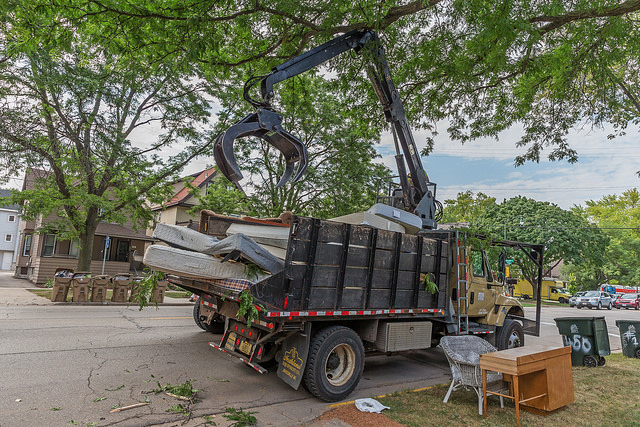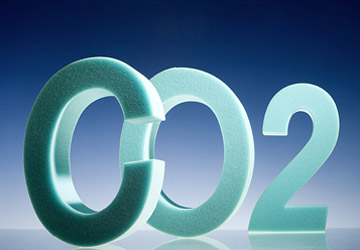A Brief History of Mattress Disposal
An important but neglected recycling topic
Whilst disposing of our beds in environmentally friendly ways is a modern requirement, as the UK is urged to recycle, re-use or compost waste items in a bid to minimise landfill and meet EU waste disposal and recycling target, recycling is in fact on something of a rebound when it comes to mattresses!
The original use of fully recyclable mattresses came from our ancient Neolithic ancestors, who built primitive beds from natural materials, such as animal skins, leaves, straw, grasses and plants. Once these beds were finished with, they were left to rot quickly into the ground – just as nature intended.
Over the next thousand or so years, as ancient communities and nations such as the Egyptians, Romans and Greeks developed sophisticated commercial and cultural activities, beds both for sleeping and as items of furniture became symbols of wealth and status. Mattresses of natural materials piled on the floor remained the popular choice for the poor, whilst wealthy homes boasted beds which, although often made of wood, included ornate carpentry and design, gilding and painted designs. The innovative Romans also boasted other sleeping comfort innovations, such as the earliest waterbeds.
What the majority of these beds all had in common was that when they were discarded they would, for the most part, biodegrade into the ground. This was already an issue of importance as since 3000 BC, humans were already starting to discard their rubbish into the ground, evidenced by the first recorded landfill site in the world at Knossos, the capital of Crete. Similarly, the ancient Romans too brought the practice of street clearance and rubbish collection into communities with their two-man teams of rubbish collectors.
By the medieval times, other natural fibres such as feather and wool were also included in mattresses, whilst the mid-18th century saw linen and cotton coverings being added to mattresses and additional natural fibre fillings such as cotton and horse-hair. These new additions could also biodegrade and were added to waste piles for composting, a practice which was already in place with the regular rubbish clearance of organic matter such as food, was already being raked from the stinking streets of bustling cities such as London.
But despite the eco-friendly origins of mattresses, the industrial revolution around the world saw exciting innovations in mattress manufacturing techniques and the use of materials which, although they meant greater comfort and ease for those enjoying the beds, began the early problems of mattress disposal. With unbiodegradable steel, foam, gels and man-made fibres such as elasticised latex and polyurethane being a major part of bed production by the 1940s, dumping old beds began to cause problems. By the 1950s, when foam rubber became standard for mattresses and pillows, the effect of non-degrading materials in landfill and fly-tipped areas was starting to become a recognisable issue of concern as beds began to become a burden. Along with the more ‘disposable’ nature of products and waste produced during increased manufacturing of the thousands of new products being created for households and industry, the problems with waste disposal had truly begun.
By the 1990s, serious concerns were being raised by both environmentalists and the bed industry, both recognising that mattress disposal was an international issue. In the USA, with around 70% of bed retailers just dumping old beds which included unbiodegradable metals and plastics into landfill, the time had come to consider ways to recycle mattresses for the first time. This began with trials at using old mattreses for energy and when this failed to work, one of the next ideas was to try stripping down mattresses into constituent parts by prisoners. This practice, first tried in New Jersey, failed mainly due to the need to find ways to recycle and sell on the components, something which bed manufacturers realised they needed to start bearing in mind at the manufacturing stage, in order to allow beds to be fully recyclable.
And so it began – the majority of contemporary beds and mattresses have all the comforts that modern technology offers, such as natural latex foam, yet with the full recyclability and bio-degradability of their earliest grass and straw counterparts. What’s more, companies such as CollectYourOldBed offer full guarantees that bed components will be 100% recycled, so even parts that cannot easily biodegrade, such as steel, can be re-used.
The UK is currently struggling to move towards the required 50% recycling target in 2020, as set by the European Waste Directive, whilst the second phase target of 70% of waste to be recycled by 2030 also looms. To support this, aiming for the use of 100% recyclable materials in bed manufacture alongside responsible recycling as the method of disposal means that the 21st century bed industry and bed owners have something very much in common with their historical contemporaries when beds first began.
Link: EC Waste Framework Directive
Visit GreenJobs for the latest Recycling Jobs and Waste Management Jobs




